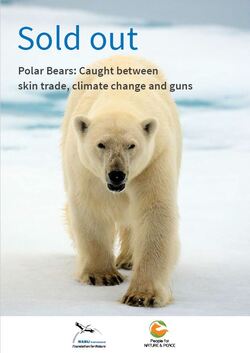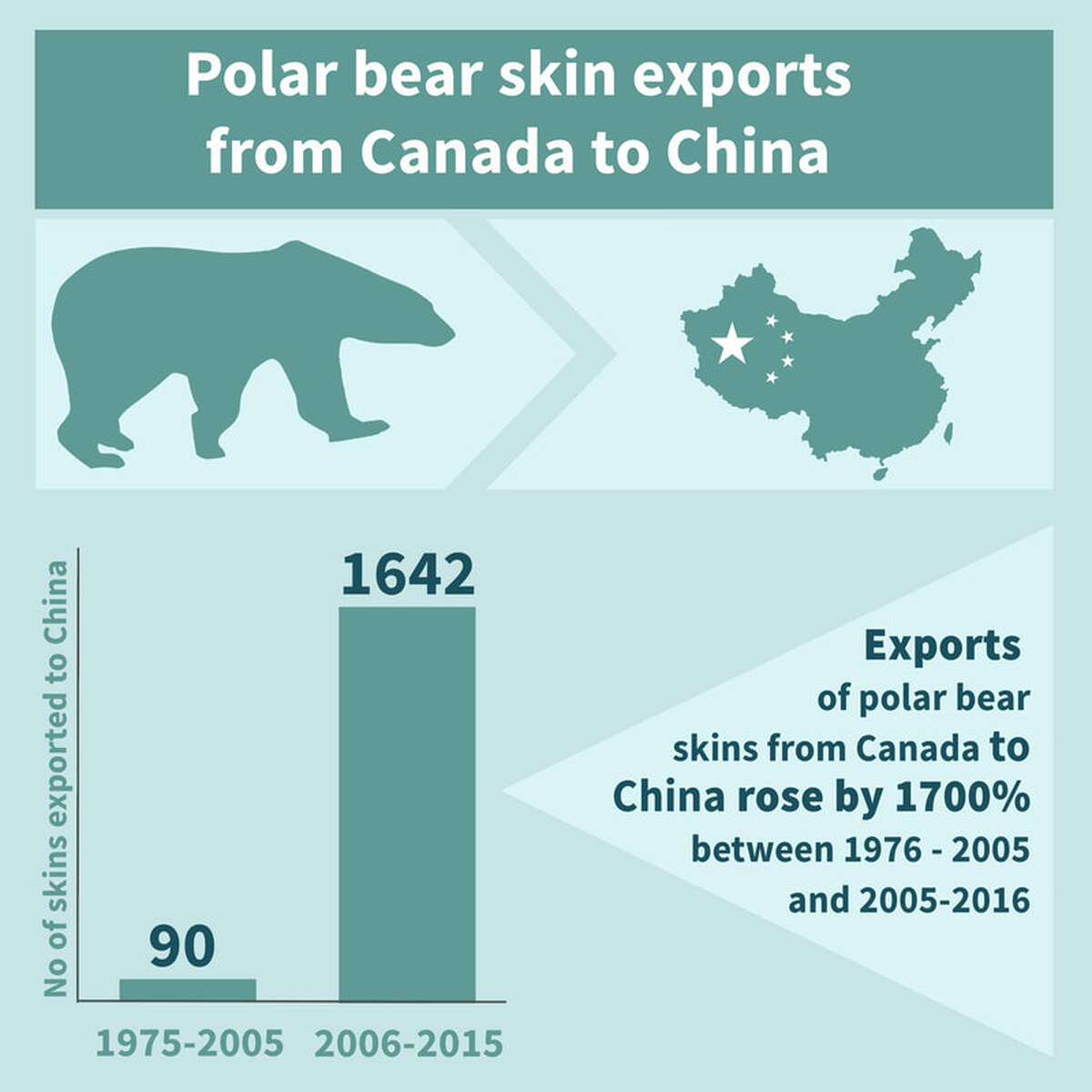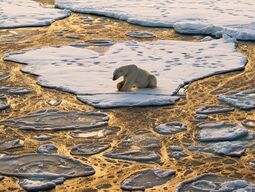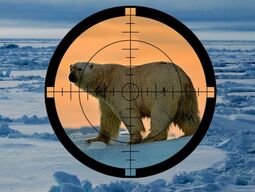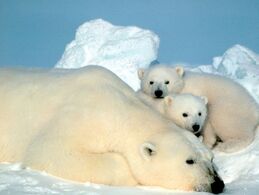Polar Bears: Hungry, homeless and hunted
|
Polar bears are our planet’s largest land predator. But despite their size, strength and ability to thrive in one of the harshest environments on earth, the survival of these majestic hangs by a thread. The plight of polar bears has become synonymous with climate change, which causes Arctic sea ice to melt and so robs the bears of a place to live, hunt and breed. Now, detailed research by PNP Technical Adviser, Ole J. Liodden has uncovered a dangerous, new and largely unrecognized threat that has received almost no attention: a resurgence in the international trade in polar bear skins, primarily to China.
The hidden trade in polar bear skins Between 1963 and 2016, hunters killed almost 53,500 polar bears - more than twice as many as are alive today. To this day, 800 to 1,000 polar bears lose their lives at the hands of native and trophy hunters each year. Polar bear hunts take place in Greenland, Russia and Alaska in the USA, but the majority of bears are killed in Canada. The country is also the last nation to permit the export of polar bear skin and trophies. Hunting to supply the international skin trade makes up about 92 percent off polar bear kills in Canada. The remaining number of kills are are due to trophy hunts and illegal hunting. Canada exported just 90 polar bears skins to China during the 30 years between 1975 and 2005. Then, skin exports and prices began to soar. During the ten year period from 2006-2015, 1,642 Canadian polar bear skins were legally exported to China. By 2011– 2015, China was importing 71 percent of all registered Canadian polar bears skin exports. This sharp and sudden rise in Chinese polar bear skin imports echoes patterns observed in other high value endangered species products such as rhino horn and ivory. The booming market in polar bear skins was reflected in an price surge at auctions. Average auction prices for Canadian polar bear skins has more than quadrupled between 2006 and 2013, with some skins commanding a premium in excess of 21,400 US Dollars. High skin prices haves enticed more native hunters to become involved in what are no longer traditional, but commercial hunts. |
Size matters
Tragically, the impact of polar bear hunting extends far beyond these disturbing trade figures. Native hunters are paid considerably more for large, good quality skins. Like trophy hunters they therefore target the biggest, strongest and healthiest bears. In doing so, hunting shortens the odds that polar bears will be able to adjust to receding sea ice and other environmental challenges. Although a climate change is likely to determine the future distribution of polar bears, the majority of population declines witnessed over the past 30 years can be attributed to unsustainable hunting by native and trophy hunters.
|
|
POLAR BEAR HUNTING IS COMMERCIALLY DRIVENHunting to supply the international skin trade makes up 92 percent of polar bear kills in Canada. A substantial rise in skin prices resulting from increasing demand in China has transformed what was once a traditional subsistence hunt into a commercially driven, international business. |
|
Please help us stop the trade in polar bear skins!
As the world's polar bears are trapped between climate change and guns, the most important conservation action we can take for them right now is to end the international trade in their skins and trophies. To give polar bears a fighting chance, we literally have to save their skins. We are working within the UN Convention on International Trade in Endangered Species (CITES), which sets the rules about international trade in threatened species to make trade in polar bear skins illegal. To start generating awareness and build momentum we and German conservation group NABU International, presented a report, which introduced the issue to the last CITES meeting in autumn 2019. The initial response from polar bear range states and other member countries was encouraging and provides a welcome first step to turn our goal into reality. But we need your help to step between polar bears and the hunters' guns and put an end to international trade in skins and trophies and support sustainable, alternative livelihoods for affected Inuit hunters. |
PNP polar bear advisor, Ole J Liodden, accompanied by our Founder and Chief Executive, Dr Barbara Maas, presents data on the international trade in polar bear skins to the UN Convention on International Trade in Endangered Species of Wild Fauna and Flora (CITES) in support of a trade ban.
|
Further Information
|
Polar bears and climate change: Hunting polar bears for their skins and as trophies undermines the species' survival in a warming Arctic
|
|
